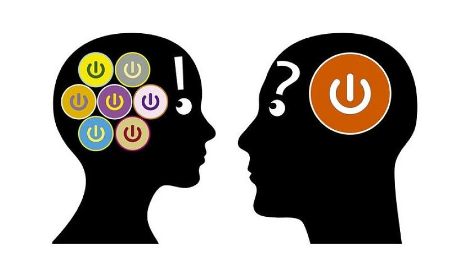The High Price of Multitasking
一心多用只是“看上去很美”
Not
only do smartphones provide unprecedented access to information, they
provide unprecedented opportunities to multitask. Any activity can be
accompanied by music, selfies or social media updates. Of course, some
people pick poor times to tweet or text, and lawmakers have stepped in.
Forty-eight states have banned texting while driving. In Honolulu, it’s
illegal to text or even look at your phone while crossing the street,
and in the Netherlands they’ve banned texting while biking.
智能手机不仅提供了前所未有的信息获取途径,还给多任务处理带来了不曾有过的可能性。任何活动都可以伴随着音乐、自拍或社交媒体更新。当然,有些人选择不合适的时间刷社交媒体或是发短信,而立法者也已经介入。48个州已禁止在开车时发短信。在檀香山,在过马路时发短信或查看手机是违法的,而在荷兰,骑车时禁止发短信。
But
legislation won’t proscribe all situations in which multitasking is
unwise; you need to self-regulate. Understanding how the brain
multitasks and why we find multitasking so appealing will help you gauge
the hazard of pulling out your phone.
但立法并没有禁止所有不明智的一心多用的情景,你需要自我控制。了解大脑是如何同时处理多个任务以及为什么我们发现一心多用是如此吸引人,将有助于你衡量掏出手机的风险。
Multitasking
feels like doing two things simultaneously, so it seems the danger lies
in asking one mental process to do two incompatible things — for
texting drivers, watching the screen and the road. A lot of lawmakers
must think that way, because 20 states have instituted bans on driving
using a hand-held phone while still allowing hands-free calls. Yet
hands-free or hand-held makes no difference — they impair driving
equivalently as far as external hazards go. Why?
同时处理多个任务感觉像是同时做两件事一样,所以危险似乎在于让一个思维过程做两件有冲突的事——比如边发短信边开车的司机,他们得边看屏幕边看路况。很多立法者肯定是这么想的,因为20个州已经禁止边驾驶边手持电话,但同时仍允许使用免提通话。然而,免提或手持没有任何区别——就外部风险而言,它们会同等地损害驾驶过程。为什么?
You
actually manipulate your phone only briefly for voice calls. The real
problem is the toggling of attention between the conversation and the
road. Even simple tasks can’t be done simultaneously; you switch between
them, and that affects performance.
事实上,你只是短暂地操作手机以接起语音通话。但真正的问题在于在通话和路况之间切换注意力。即使是简单的任务也不能同时处理;你在它们之间切换,这就会影响你的表现。
In
a classic experiment, subjects viewed a digit-letter pair: for example,
“C7.” A signal instructed people to classify the letter as a vowel or
nonvowel or the digit as odd or even. After the response, a new stimulus
and a new signal appeared. When the classification task switched,
people responded about 20 percent slower than when it was repeated,
because switching requires extra steps: resetting your goal (“ignore
digit, attend to letter”) and reloading the mental rule (“judge it as
vowel or consonant.”)
在一个经典实验中,受试者看到一个数字字母组合,如“C7”。一个信号指示人们把字母分为元音或非元音,把数字分为奇数或偶数。受试者做出反应后,新的刺激和新的信号随之出现。当分类任务切换时,人们的反应比任务重复时慢20%左右,因为切换需要额外的步骤:重新设置目标(“忽略数字,注意字母”)或者重新整理思维规则(“判断它是元音还是辅音”)。
The
cost of shuffling goals and mental rules is harmless if there’s
predictable downtime during one or both tasks. As a conference call
turns to an agenda item irrelevant to you, go ahead and answer email.
Multitasking while driving is so dangerous because driving requires all
of your attention at unpredictable times. People sense this, and when on
the phone they drive slower and increase their following distance, but
they are far too confident that these measures mitigate risk. Fifty-nine
percent of adults, young and old, admit to using their phones while
driving.
如果在一项或两项任务中都有可预见的停顿时间,那么打乱目标和思维规则是无害的。当电话会议转向一个与你无关的议程时,不妨一边听一边回电子邮件。开车时一心多用则很危险,因为开车需要你在不可预测的时间里集中注意力。人们意识到了这一点,当他们打电话时会放慢速度,增加同前方车辆的距离,但他们过于自信,觉得这些措施就可以降低风险。59%的成年人,无论老少,都承认开车时使用手机。
This
overconfidence extends to other activities. A 2015 survey showed that a
majority of students who use social media, text or watch TV while
studying think that they can still comprehend the material they’re
studying.
这种过度自信还延伸到其他活动中。2015年的一项调查显示,大多数学生在学习时使用社交媒体、发短信或看电视,他们认为这样做仍然能够理解正在学习的内容。
This
confidence is especially understandable for very simple tasks. Everyone
knows texting behind the wheel is dangerous, but listening to music or
chatting with a passenger seems so undemanding as to be innocuous. Yet
both measurably compromise driving. If that’s surprising, consider
whether you’ve ever turned down the radio or shushed passengers when the
road turned icy or when you were looking for an address.
如果任务非常简单,这样的自信是可以理解的。所有人都知道开车时发短信很危险,但听音乐或者同车内乘客聊天似乎毫不费力,根本没什么害处。然而,两者都会明显影响驾驶。如果这让你感到惊讶,想一下你是不是曾经在道路结冰或者寻找某个地址的时候把收音机的音量关小,或者让车内乘客安静下来。
Even
walking, which feels like something we do on autopilot, is not immune.
Experiments in virtual environments show that pedestrians are more
likely to be hit by a vehicle when crossing the street if they are
listening to music.
即使是走路这种好像完全自动的事情也不例外。在虚拟环境中进行的实验表明,行人在过马路时听音乐的话更有可能被车撞到。
But
people don’t multitask solely because they see no harm in it; they
perceive benefits. They say they multitask for efficiency, to fight
boredom or to keep up with social media.
但人们一心多用不是因为他们觉得这样做没有害处;而是因为觉得这样做有好处。他们说,他们一心多用是为了提高效率、打发无聊、或是跟上社交媒体的步伐。
Music,
likely the most common variety of multitasking, is added to tasks
because it heightens arousal (for example, your heart rate increases),
making it easier to stick with a long drive or a tedious textbook. Music
was once common on factory assembly lines; the British Broadcasting
Corporation offered a radio program for this purpose, “Music While You
Work,” from 1940 until 1967.
音乐很可能是最常见的一心多用形式,人们在做其他事项时听音乐是因为它能提高兴奋度(比如心率会增加),让你在长时间驾驶或阅读枯燥的教科书时更容易坚持下来。在工厂的装配线上,音乐曾经很常见;从1940年到1967年,BBC还专门提供一个名为“工作音乐”的广播节目。
Thus,
even if you fully appreciate the cognitive cost, you might tolerate it
in exchange for the emotional lift. Parents disapprove when their child
studies with deadmau5 blasting because they compare that with studying
in silence. But the child calculates that without the music, he wouldn’t
study.
因此,即使你完全理解一心多用的认知成本,你也可能会容忍它,换取情感的提升。父母不赞成孩子学习时大声地放Deadmau5(电子音乐人、DJ——编注)的音乐,因为他们觉得效果不如安安静静地学习。但是孩子却觉得不听这个音乐他就学不进去。
This trade-off of cognition and emotion suggests a few principles to better manage your multitasking.
认知和情感之间的平衡为更好地管理一心多用提供了一些原则。
First,
hoping for efficiency by combining two pure productivity tasks — say,
composing a letter while following a presentation — is folly. That’s all
cognitive cost and no emotional benefit.
首先,希望同时进行两项纯粹的生产力任务并提高效率是愚蠢的,比如一边演讲一边在写一封信。这样只会产生认知成本,没有情感收益。
Second,
be realistic about what poor task performance (when driving, for
example, or operating machinery) might mean, given that you’re not as
good at multitasking as you believe. If you’re not ready to eliminate
secondary tasks, at least be ready to ditch them in the moment. I don’t
expect music to disappear from cars, but consider hitting mute if
traffic gets dense or road conditions worsen.
其次,考虑到你并不像自己所认为的那样擅长一心多用,要清醒地认识到糟糕的任务表现可能带来什么后果(比如开车或操作机器的时候)。如果你还不打算放弃次要任务,至少要做好准备暂时放弃它们。我不指望音乐会从汽车上消失,但如果交通拥挤或路况恶化,可以考虑把音响调成静音。
Third,
see if you can get the emotional lift without the cognitive cost.
Instead of multitasking, take more rest breaks, and get your social
media fix during a break.
第三,看看你能否在不付出认知成本的情况下获得情感提升。与其一心多用,不如多休息,在休息的时候过一下社交媒体的瘾。
People
will choose to multitask. But we should, at the very least, be fully
aware of how that choice affects us and the potential consequences for
ourselves and others. We need to pay attention to how much — or how
little — we are paying attention.
人们会选择一心多用。但是,我们至少应该充分意识到这种选择会如何影响我们,以及对我们自己和他人带来的潜在后果。我们需要关注我们的注意力能有多么集中——或者有多么不集中。
来源:纽约时报

参与评论